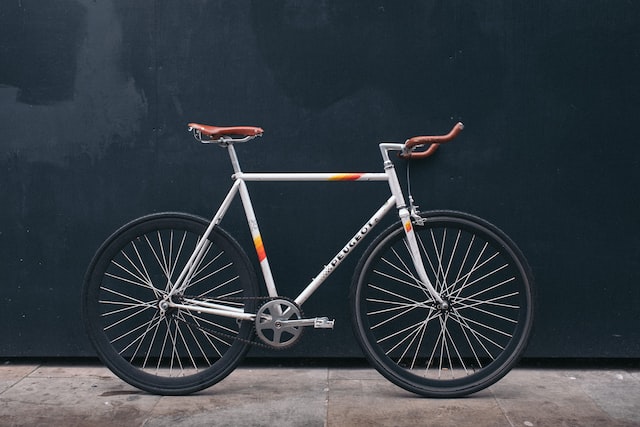If you are considering getting a bicycle, there are a few things you should consider before you buy one. You need to consider the wheel size, gearing, frame size, positioning yourself on the bike, and medical conditions.
Frame
The frame is one of the most important parts of a bicycle. A good frame will make your ride a joy. However, it is also the most expensive. So how do you choose the best bike frame?
First, it is important to know the differences between the various materials. Aluminum, steel, and titanium are the main contenders. Each material has advantages and disadvantages. If you are trying to decide between these metals, look for the quality of the welding.
Aluminum is lighter and can be a good choice if you want the least amount of weight. But, it does not have the same damping qualities as titanium. It can feel harsher, too.
Steel is the most durable of the three materials. You can recognize a good steel frame by its weight. Many riders claim that a steel frame gives a smoother ride than an aluminum bike.
Another option is a titanium frame. Unlike aluminum, titanium does not corrode or wear off. This makes it a good choice for long-distance touring.
You should consider the design, material, and durability to select the best frame. The best bicycle frames result from superior design, manufacturing, and testing.
In addition to the design, a good frame combines four elements: comfort, stiffness, compliance, and ride quality. These elements have to be balanced. Too much stiffness will make your riding uncomfortable and lead to poor power transmission. Conversely, too much flexibility will cause the chain to rub against gear mechanisms and the brakes to scrub the road.
Gearing
Gearing is a huge minefield when buying a new bike in online marketplaces like BicycleBlueBook.com. There are many factors to consider, from the type of transmission system to the relative gearing steps of different mechanisms.
Gearing is the process of converting pedal force into wheel output. This can be done by using a chain or a cog. The higher the gear, the faster the wheels will spin. However, it is important to choose the right gear for the riding conditions you will be in.
To determine a bicycle’s gearing, you need to know how many gears it has and what the gear ratios are. A gear ratio is the number of teeth on a sprocket.
Gears help you to maintain a comfortable pedaling speed. Depending on the size of your sprocket, you can adjust the gear ratio to suit the amount of effort you put into pedaling. You can also switch out the chainrings of your cranks to customize your gearing.
Choosing the gear for your next bike will depend on your riding style. If you are going to do a lot of hill climbing, consider a more efficient gearing system. Similarly, if you live in a flat, gravelly area, you should opt for a more compact road gearing system.
While choosing the most effective gear for your riding style is not as easy as it sounds, it can be done. Many cyclists fine-tune their gearing to suit their needs. They do this by replacing their old chainrings with different size ones. Some bikes even come with more than one system of gear change.
Wheel Size
When buying a new bike, it is important to know the wheel size. If you are unsure what the correct size is, it is best to consult a bicycle expert.
Bicycle wheels are typically measured in inches or millimeters. The outside diameter of the wheel is often written on the sidewall of the tire. You may also want to check with the dealer for information on what size wheel will fit your bike.
Wheels vary in size depending on their primary use. Mountain bikes generally use a 26-inch wheel, while BMX bike wheels are usually in the 500 or 600 mm range. Some models are available with 29 or 27.5 wheels. There are many advantages and disadvantages to different wheel sizes. Taking your measurements is the first step to finding the right size.
To get the measurements, place your bike on a sturdy surface. Take a measuring tape and measure the distance between the axle assembly and the outer rim. A good rule of thumb is to leave about two centimeters of extra space between the rim and the frame to allow room for the tire.
Positioning Yourself on The Bike
If you’re looking to improve your performance on the bicycle, it’s important to learn how to position yourself correctly. A good position will help you stay comfortable, protect you from injury, and increase the efficiency of your bike. Keeping your body in a neutral spine will give you the most benefits.
The first thing to do is ensure your saddle is at the right height. This means that it’s not too high or too low. Too low a saddle will cause issues with your thighs, hips, and knees. However, a saddle that’s too high can also affect your performance. Putting too much weight on your arms and shoulders will not only be painful, but it will also affect how well you control the bike. Rather than putting your arms over the handlebars, put them on the seat, keeping your hands relaxed.
Once you’ve found the best position, you should be able to hold it comfortably. If you find your position uncomfortable, consider doing some stretching exercises. These exercises will help you get used to your new position and will allow you to feel more comfortable on your next ride.




Leave a Reply
You must be logged in to post a comment.